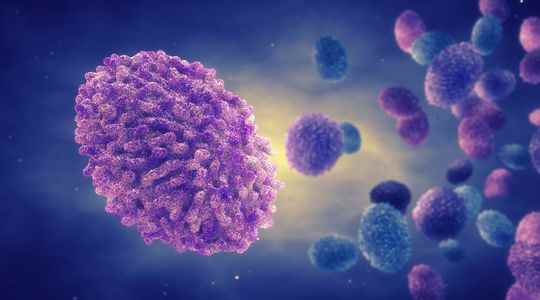What level of alert for Monkeypox? The World Health Organization is convening its Expert Committee on Monkeypox on Thursday July 21 to determine whether the current outbreak of cases constitutes a public health emergency of international concern, the highest threshold. This emergency committee will be responsible for evaluating the epidemiological indicators, while the situation has worsened in recent weeks: more than 14,500 cases recorded in 70 countries, according to figures from the United States health authorities (CDC).
The latest report from Public Health France, published on Wednesday July 20, reports a total of 1,453 confirmed cases of monkeypox in France since May, including 678 in the Paris region. The unusual upsurge in monkeypox cases outside central and west African countries, where the virus is endemic, has spread across the globe within weeks, with Europe as its epicenter.
The incubation phase of the virus can last from “5 to 21 days”, informs the French Ministry of Health website, before the first signs of the disease appear: fatigue, fever, headache, muscle aches… Skin rashes then appear, with symptoms similar to those of chickenpox. “We become contagious from the start of the clinical signs and up to three weeks later. We have to wait for the skin lesions to disappear, they must be dry and fall off”, explains to L’Express Hervé Fleury, virologist, professor emeritus at the CNRS and at the University of Bordeaux. Patients must respect isolation for the duration of the illness.
In his newsletter dated July 18, the ARS of Île-de-France indicates that Monkeypox has three modes of transmission. The first is done by air, in the context of “prolonged contact (less than 2 meters for 3 hours) through respiratory secretions (sputters and microdroplets projected into the air during an exchange with a person) “. Another way to catch the virus is to come into close and direct contact with this person via skin lesions (wounds, scabs), bodily fluids (blood, saliva, etc.), or mucous membranes (mouth, anus, orifices naturally occurring mucus).
“The virus is very strong”
Having been in contact with objects or linen contaminated by the person constitutes the third way of transmission. “The virus is very solid. If you have skin lesions and you have lain down on a bed, if someone comes to sit there afterwards, viral particles will be able to enter via skin microlesions”, details Hervé Fleury. He adds that the virus can remain “several days” on inert areas.
“Pox viruses (which infect humans and animals) are among the most resistant viruses,” says the specialist. A german studypublished last June in the medical journal Eurosurveillance, emphasizes how important it is for hospital staff to decontaminate surfaces in contact with patients. The researchers reveal that a high level of contamination was found on the textiles widely used by the patients, in particular on the fitted sheet, the duvet cover, the pillowcase or even the shirt of the first patient.
This route of transmission, traces Hervé Fleury, is well known with smallpox, also called “smallpox” – which in reality has little to do with monkeypox, the symptoms being much less serious. “The smallpox virus moved with bales of cotton that came from Pakistan, it had remained on the fabrics”, details the virologist. However, some gray areas remain on the environmental contamination of surfaces by the virus: we still do not know the infectious dose necessary for the transmission of Monkeypox from contaminated inert surfaces.
While monkeypox is not considered a sexually transmitted infection, a italian studypublished in May in Eurosurveillance, could be a game changer. Virologists and infectiologists from the National Institute of Infectious Diseases ‘Lazzaro Spallanzani’ (IRCCS, Rome) declare having found the viral DNA of Monkeypox in the semen of four infected people. These patients were men who have sex with men.
This work leaves the door open to a possible transmission of the virus by sexual means. “However, these preliminary data cannot be interpreted, at this stage of the research, as formal proof of the infectivity of the sperm”, conclude the researchers. Further studies are awaited.
